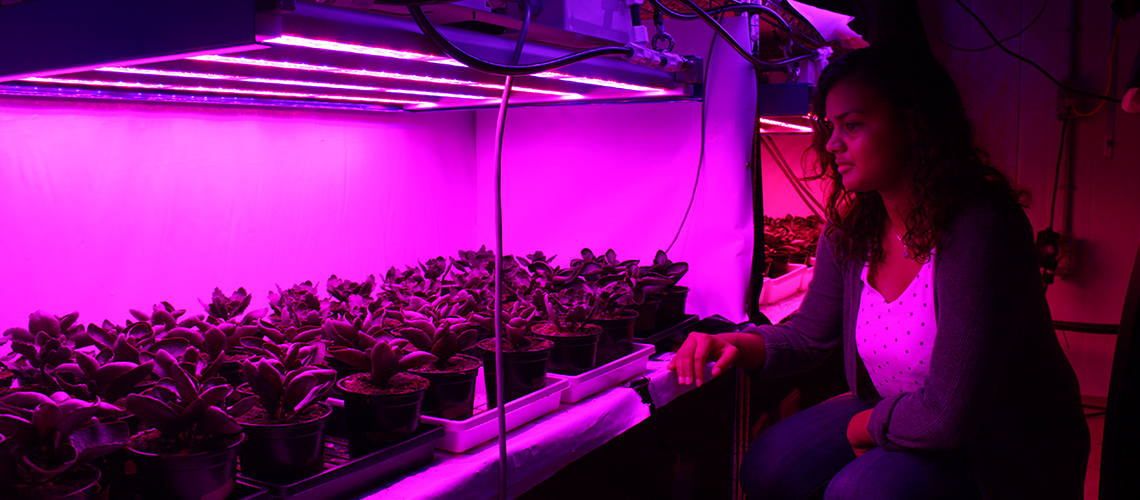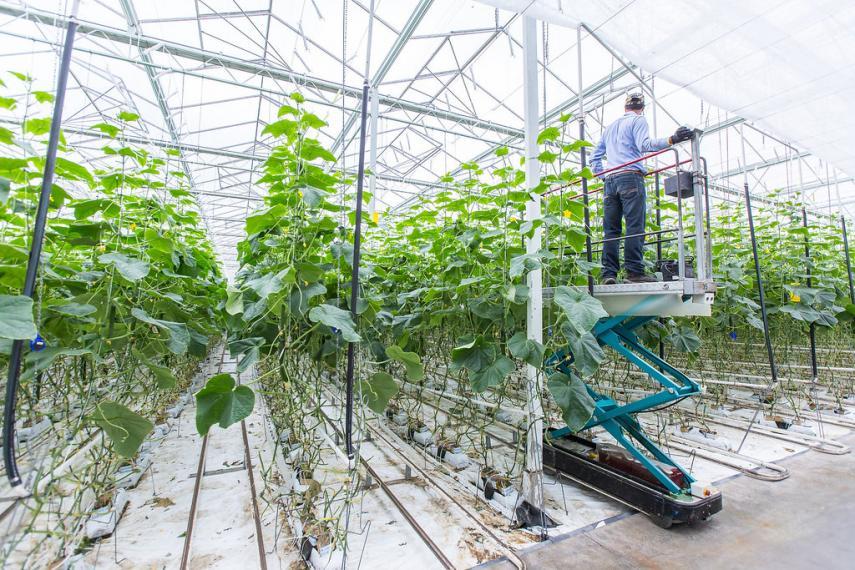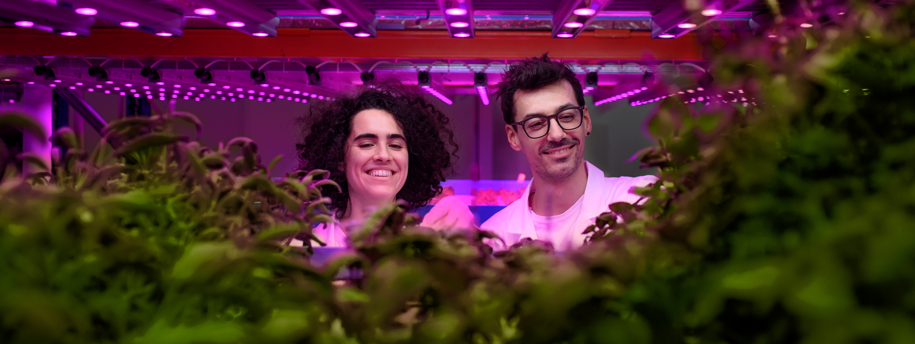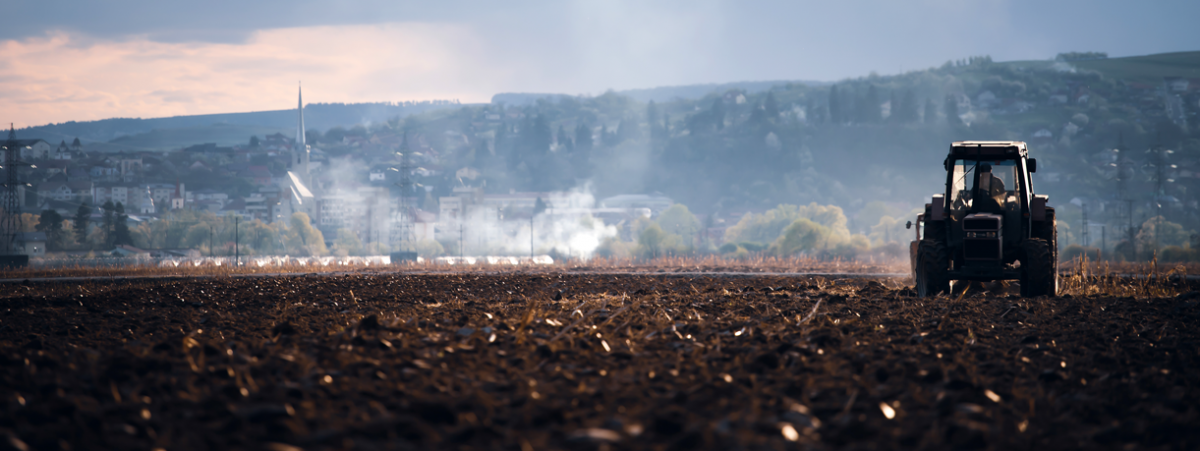
How can we create a more secure, nutritious and safe food system?

Today’s global agriculture and food systems are facing immense challenges. Adapting to climate change, risks of food insecurity and the safe adoption of disruptive technologies are just some of the major challenges facing food producers and communities around the world. In this on-going series, we explore the University of Guelph’s Ontario Agricultural College impact in creating a more efficient, prosperous and sustainable global agriculture and food system.
How to ensure sufficient and nutritious food for a growing human population, now numbering around 40 million people in Canada alone and more than eight billion worldwide?
Food security is partly the focus of Canada Agriculture Day on Feb. 13 – and it’s a major part of diverse research programs at the University of Guelph’s Ontario Agricultural College (OAC).
This story highlights OAC researchers and graduates working to enhance food security in three key areas: Indigenous food sovereignty; food production in controlled environments, notably vertical farming; and food safety under climate change.
Food sovereignty for First Nations
Improving food security among First Nations communities in northern Ontario is the goal of a $1-million, three-year project led by Dr. Silvia Sarapura, professor in OAC’s School of Environmental Design and Rural Development.
Under the legacy of colonialism, many of those communities have lost connections with their traditional production practices, said Sarapura. Instead, they depend largely on food delivered from southern markets, much of it expensive and consisting of less healthy processed products.

This project aims to help re-establish Indigenous food systems based on reintroduction of seeds for crops like corn, squash and potatoes that were formerly grown by many First Nations.
Researchers and graduate students will work with four First Nations communities around Lake Superior, comprising about 7,000 families.
The team will monitor crop growth, including determining which heirloom seeds perform best under local conditions and establishing processes for selecting seeds for subsequent growing years. Earlier, two grad students mapped area soils and collected soil samples for testing at U of G to determine crop viability and conducted health surveys of community members.
The project provides U of G graduate students with hands-on experience with collaborative, community-led research.
“We’re looking to address the food insecurity problems and food sovereignty in Indigenous communities,” said Sarapura. “We want to help reintroduce varieties of traditional foods.”
The team will involve community members, including Indigenous seed keepers and chefs, in tending crops and working with traditional methods of cooking and food preservation and processing.
“This is not just pure research. We want people in the communities to become aware that we can work together,” said Sarapura.
This project is funded by the Ontario Agri-Food Innovation Alliance, a collaboration between the Government of Ontario and U of G.
Indoor crop production promises benefits in higher yields, lower costs
In both isolated northern communities and densely populated urban centres, ensuring ready access to sufficient nutritious food is the goal for Dr. Youbin Zheng, a professor in OAC’s School of Environmental Sciences. His research approach can help inform indoor food production, including vertical farming, as a complement to traditional farming practices.
Zheng studies soilless plant production in controlled growing environments. Working in campus greenhouses and growth chambers, he tests lighting technologies and develops growth media for producing vegetables including microgreens, baby greens, strawberries, tomatoes, peppers and cucumbers.
He has experimented with various growing media including rockwool (originally made for building insulation), peat moss base, as well as coconut fibre. Combined with nutrient solutions and different nutrient solution delivering systems, such as misting systems, these materials offer sterile, aerated media for plant production.

Innovative systems for producing crops indoors will be increasingly important to feed growing populations, said Zheng. He said growing in controlled environments can offer much higher yields than traditional field crops, as well as more efficient harvesting, packaging and shipping to nearby markets with potentially less food waste.
His studies may facilitate cheaper crop production in Canadian cities whose sprawling size increasingly distances consumers from farmland and whose seasonal climate normally requires costly imports from other parts of the world.
“If we want to eat healthy, fresh vegetables and fruits should be produced on-site or nearby so they’re not imported,” said Zheng, adding that ongoing regional conflicts and the COVID-19 pandemic have underlined the importance of food security.
“You don’t need to have fertile land, just a building close to where food is needed, and you can produce crops indoors year-round,” said Zheng. Indoor production including vertical farming may also help alleviate the risk of field crop damage from weather extremes driven by climate change.
Food safety for food security
Links between food security and food safety resonate for OAC food science alumnus Brenda Zai.
Currently completing her PhD at the Ontario Veterinary College, Zai models how climate change may facilitate the spread of food-borne pathogens such as E. coli and campylobacter. With potentially hotter summers, she said, greater heat stress on livestock can lead to increased fecal shedding of pathogens. Those disease-causing bacteria may enter watercourses and ultimately contaminate water used to irrigate produce.
Contaminants may then travel with leafy greens, grains and livestock products into the food system. “It’s a big snowball effect,” said Zai. “One little change can have a large effect.”

Yet we have little information about how climate change may affect food safety. Hoping to fill that gap, Zai is developing statistical models to help predict how climate change will affect the incidence of food-borne illnesses. For instance, how might projected climate variables such as temperature and precipitation affect the prevalence of different food-borne pathogens by, say, 2050?
Her work combines data on food-borne illness with information from Environment and Climate Change Canada. “This is predictive modelling,” said Zai. “We don’t have predictive models for food safety.”
She hopes her research will ultimately feed into models used by policy makers and groups such as the Public Health Agency of Canada for gauging climate change impacts on food safety and for devising mitigation strategies.
“You can’t have food security without safe food,” said Zai.
Zai works with the University’s interdisciplinary One Health Institute that draws together campus researchers in environmental, human and animal health.
